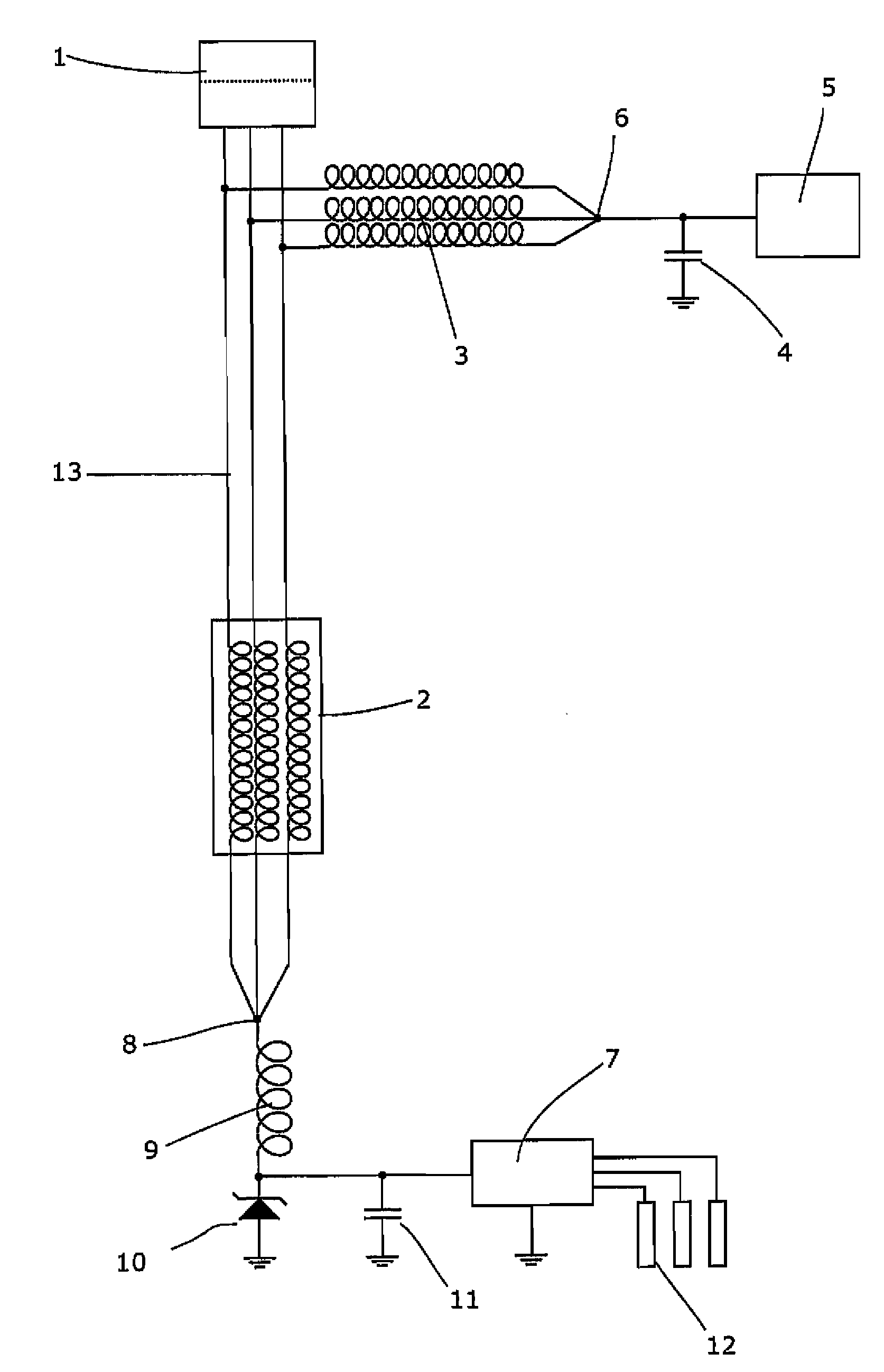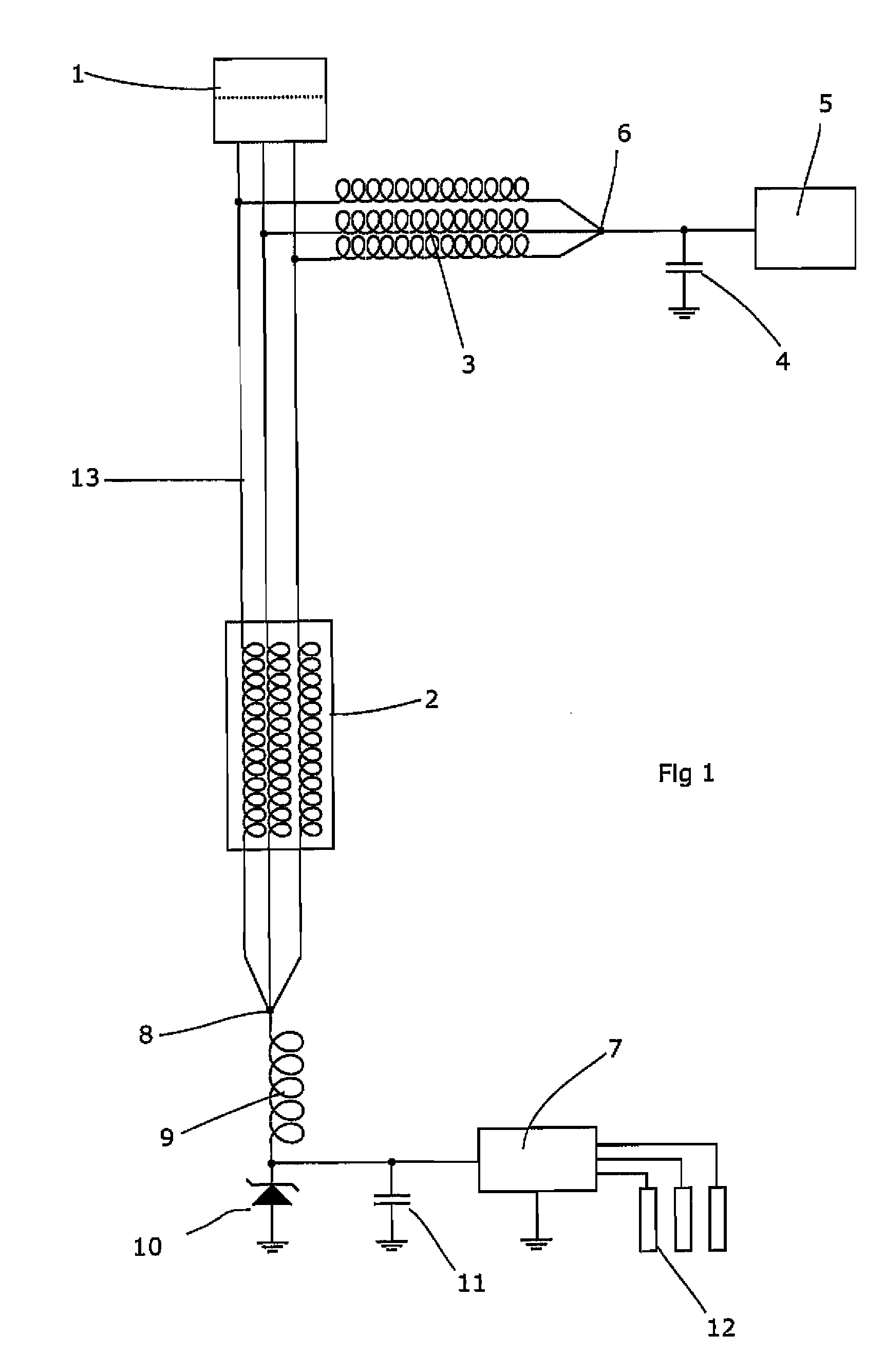Signalling Method
a signal and signal technology, applied in the field of signal signaling methods, can solve the problems of increasing the output signal, dominating the signal error, and negative calibration error, and achieve the effect of reducing the effect of electrical interference and reducing the bandwidth
- Summary
- Abstract
- Description
- Claims
- Application Information
AI Technical Summary
Benefits of technology
Problems solved by technology
Method used
Image
Examples
Embodiment Construction
[0024]FIG. 1 shows a downhole motor 2 connected via a downhole 3-phase power cable 13 to a surface isolated power supply 1. This system is used to assist the flow of oil up the well in a generally known manner.
[0025]A downhole instrument, consisting of downhole electronics 7, sensors 12, capacitor 11, zener diode 10 and downhole inductor, 9, is attached to the neutral point 8 of the downhole motor 2.
[0026]Surface electronics 5 are attached to surface neutral point 6, which is formed by joining the three surface inductors 3 together to make the neutral point 6. The surface conductors 3 are electrically connected to the downhole motor cable 13.
[0027]Hence, the downhole electronics 7 can communicate via inductor 9, motor 2, cable 13 and surface inductors 3 to the surface electronics, 5.
[0028]The surface electronics 5 provide a steady direct current (DC) voltage, using well known methods, and the downhole electronics 7 sink a controlled amount of current, using well known methods. The a...
PUM
 Login to View More
Login to View More Abstract
Description
Claims
Application Information
 Login to View More
Login to View More - R&D
- Intellectual Property
- Life Sciences
- Materials
- Tech Scout
- Unparalleled Data Quality
- Higher Quality Content
- 60% Fewer Hallucinations
Browse by: Latest US Patents, China's latest patents, Technical Efficacy Thesaurus, Application Domain, Technology Topic, Popular Technical Reports.
© 2025 PatSnap. All rights reserved.Legal|Privacy policy|Modern Slavery Act Transparency Statement|Sitemap|About US| Contact US: help@patsnap.com



